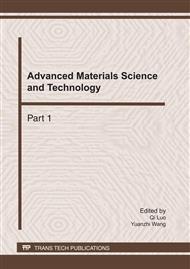p.846
p.852
p.857
p.861
p.866
p.873
p.879
p.884
p.890
Resource Allocation for Parallel Task in Grids
Abstract:
Task running in Grids may require multiple types of resources simultaneously. Proposing and designing a resource discovery scheme based on Economic Agent. Base on the economic model and the technique in agent of grouping nodes sharing similar files to improve efficiency, this thesis suggests a resource discovery scheme based on economic agent, which is called EAGRD. Theoretical models on resource discovery are provided, under which EAGRD is compared with existing schemes theoretically. By controlling propagation of message into related communities, EAGRD improves time and network efficiency at the cost of topological maintenance overhead.
Info:
Periodical:
Pages:
866-872
Citation:
Online since:
January 2011
Authors:
Keywords:
Price:
Сopyright:
© 2011 Trans Tech Publications Ltd. All Rights Reserved
Share:
Citation:


